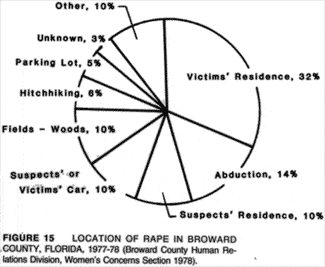by Jana Leo
From the author:
This book is primarily the narration of my individual reflection on an event. It is an autobiography, documenting a period in my life. It is also a compilation of essays on the nature of rape and crime. Moving from an individual’s viewpoint to a more general look at society, the book attempts to examine the relation between phenomena that, at first, appear unrelated, such as rape and real estate exploitation. Finally, the book is an experiential study of a city, an essay based on my observation of a culture.
How I lost the feeling of being at home
In mid February, 2001, a couple of weeks after the rape and on my way to pick up my mail at the old apartment, I thought I saw my assailant in the corner grocery store. Detective M. told me that this was normal, that though I might be certain I was seeing him in many places, I would be wrong. On a Saturday afternoon a few weeks later, on my way upstairs to talk to the people who were staying in my apartment, I encountered him on the second floor landing.
-Hi, he said.
-Hi, I replied.
This time, I had no doubt it was him. A fear cut through my body. I continued up to the fourth floor, then down again. I ran to a pay phone and called the police. I met them at the phone booth and drove around the neighborhood in the back of the police car, searching for him. The day that he entered my apartment was in the middle of winter, but he wore no jacket, nor was he wearing one when I encountered him this second time. Only someone who lived nearby would travel without a coat. After an hour of unsuccessful searching, the policemen drove me back to Avery Library at Columbia University, where I had been doing research for my thesis on game theory and architecture. But within weeks the direction of my thesis would alter, as I tried to answer the crucial questions in my own life: Did my assailant live in my area? What is the operational distance of a criminal? Would the rapist return? Is there a pattern of criminal behavior, when rape is followed by murder?
After being held in my apartment and raped, I didn’t feel safe at home. In fact, I didn’t feel at home anywhere or with anybody. The idea that rape occurs mostly at night, in dark alleys, in alien and distant locations is a myth. It nourishes the image of home as a safe place, trying to remove the threat of rape from the mind. This comforting idea feeds the masculine desire for females to be available within the sanctuary of home. Another myth is that rape is attached to adventures and risk.

In fact, rape is the ultimate invasion of privacy and often happens in private or semi-private places. Rape occurs at home or is committed by those with whom the victim feels at home. Police call them “known doers.” Men who live in the victim’s house, relatives, or men the victim has social contact with constitute 75 percent of rapists. One out of four women is raped in or around her own residence. In this way, rape is domestic. The illusion that rape occurs outside of the context of everyday life and beyond the perimeter or familiar places reinforces the perception that home is a safe place. But as I later discovered in on-line research, “Ninety-four percent of rapes/sexual assaults occurred within fifty miles of the victim’s home.”
….It appears to me that crimes involving the ultimate invasion of privacy are given a protective aura of secrecy in order to distance ourselves from the victim: the crime occurs in your home, not in mine. Each house is a different universe. Looking at U.S. Bureau of Justice statistics, serious crimes in general have decreased. But while homicide, robbery and assault rates have declined, rape and burglary have remained stable for the last 15 years. Burglary and rape are crimes that occur mostly in or around the home….
Semi-private spaces inside of buildings do not appear to be the clear responsibility or jurisdiction of government forces, nor clear responsibility of city departments. There is a building department code that offers a detailed and strict fire protection, but no crime protection code exists. The only regulations required by the New York City Housing Preservation and Development are limited to doors, windows, locks and gates.
Assault is more likely to happen in transitory space like entryways, staircases, elevators, basements, roofs and hallways. Rapists take advantage of fragile moments, such as opening the front door of a building or entering an apartment. My assault, and many others, occurred within the threshold between public and intimate space.
A potential intruder will not be enticed by a building which does not appear to correspond with what is inside, or if he does not understand the layout of an apartment. Energy could be expended in architectural design that deterred crime – simply by being less obvious, making the potential intruder feel exposed – instead of putting effort into gating the victim.
My assailant was unknown to me, but he knew my space. He knew the building’s security conditions and where to wait without being seen. The super told me he was staying on the roof of my building. What was he doing on the roof? He attacked me in the early afternoon. Was he homeless? He was clean and well dressed. He didn’t seem to be homeless. He was familiar with the swimming pool and might have showered there. I encountered him twice. Why would he come back to the location of the rape? Actually, he didn’t come back. He never left because the building was his territory, and even committing a rape could not persuade him to leave.
I was angry that the police did not watch the building to wait for him to reappear. Detective M. was in charge of the investigation. He wasn’t helpful. He took everything for granted and disregarded indications that the rapist was staying a few blocks away from my apartment. He took lightly the fear I had of the rapist coming back to kill me because I reported the rape….”
A crime committed in another person’s house is an attack on that person but also, indirectly, an attack against what that person has and what the attacker lacks. To break into the resident’s body is a way to break into both the house and body at once. If the body is understood as “home,” rape may carry both the desire to feel at home in the body of another and the denial of the need for “home” through violating the other person’s body. In the case of rapists unknown to the victim, rape violates both the body and the home; in cases where the victim knows her assailant, rape is an attack against the feeling of “home” or an appropriation of home as his territory. The fact that the gender of rape victims is predominately female and that traditionally, the place for women is in the house, may relate to the identification of home with a woman’s body.
Looking at locations where rape takes place, I realized that home is a central point of reference. Rape follows two major patterns: rape either occurs in or near the victim’s home, or farther away but still in relation to the home….
An analysis of rape, based on preventing high risk situations and staying at home, or the portrayal of the “the high risk victim for rape,” such as race, poverty or marital status, is a way to deviate from the most important factor: gender. There is no distinction of gender when rape involves children. The “Special Victims Squad” deals with both children and women, who are victims of rape and other sexual abuse. Rape is defined largely by gender.
One out of six women is raped. The statistic sounds incredibly high. However, the statistical number seems to be far below the real number. Among the women I know well enough to have shared their experience of rape with me, half of them said they have been raped. My friend L., told me that when she was raped, the thought: “here it is” came to her, as if rape is something every woman fears and expects to happen. The probability is such that a woman has to assume, if she hasn’t already been raped, she very possibly will be in the future, and if she has, she may be raped again. The ghost of rape is attached to being a woman.

Jana Leo is as also the author of the literary essay: The Trip with No Distance. She has a Doctorate in Philosophy and a Masters in Architecture from Princeton University. She was a professor of Architecture at Cooper Union for seven years and now splits her time in between Madrid and New York. This is her first book in English and was edited by Keith McDermott. It will be published in April 2009 by BOOK WORKS in London.
Also See: The War I Know, Sidelined A-Z By Carolyn Gage in this edition of On The Issues Magazine.
Also See: Media Tools Counter War Violence Against Women by Ariel Dougherty in this edition of On The Issues Magazine
